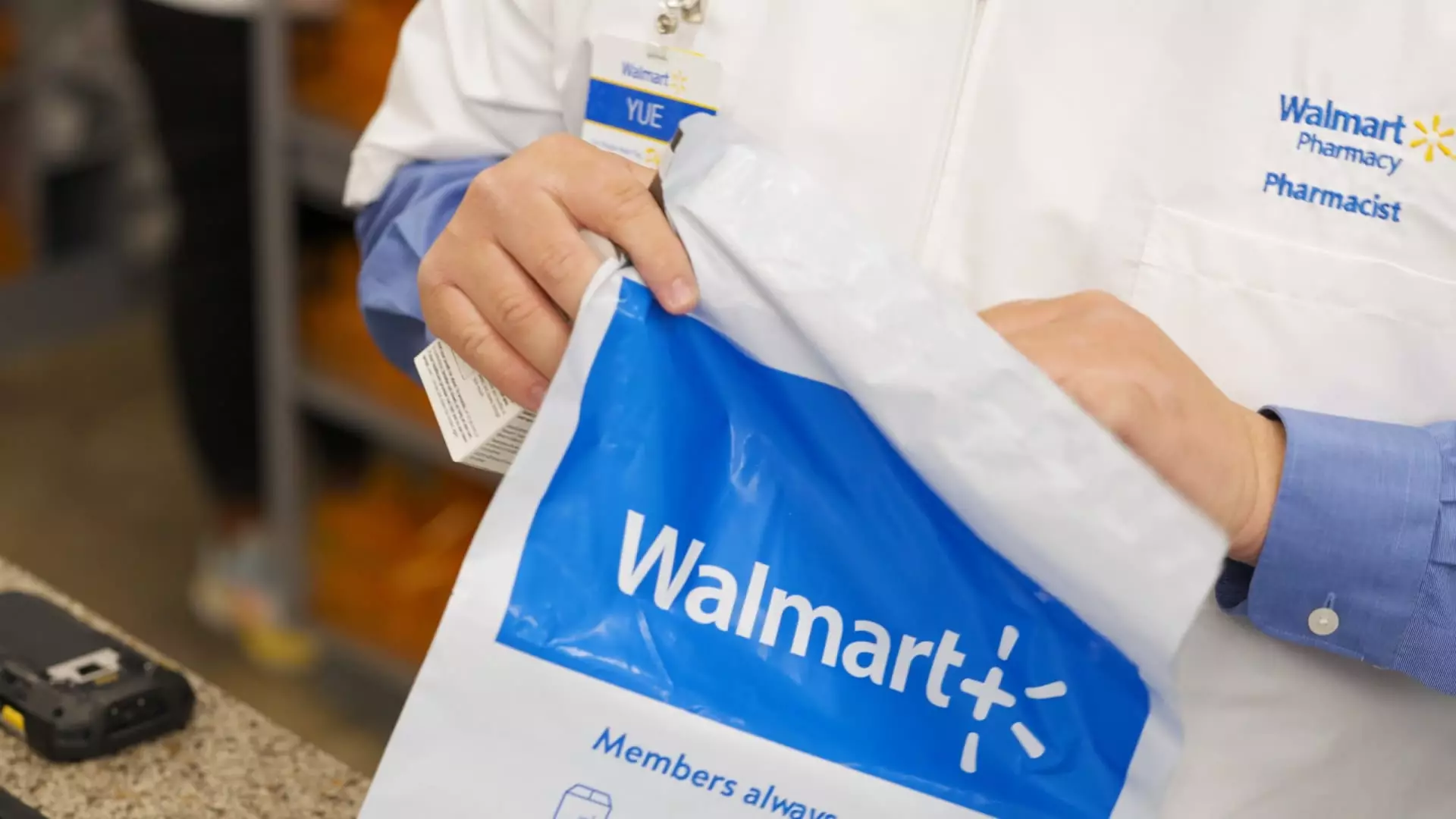In recent times, the dynamics of the retail pharmacy landscape have faced significant transformations as large chains like CVS and Walgreens strategically withdraw from certain markets. In a bid to boost profitability and reassure investors, these drugstore giants are shuttering hundreds of locations across the country. Contrarily, Walmart, the largest retailer in the United States, is stepping into the fray with a bold new initiative: the introduction of prescription delivery services straight to customers’ doorsteps. This intriguing pivot raises essential questions about market competition and consumer convenience.
Walmart’s latest service allows customers in six states—Arkansas, Missouri, New York, Nevada, South Carolina, and Wisconsin—to receive their prescriptions delivered conveniently to their homes. By the end of January, the retail giant aims to expand this service to 49 states, maintaining that the only exception is North Dakota due to state regulations. This delivery venture is another example of how Walmart is trying to carve itself a niche in the healthcare sector, alongside its already established dominance in the retail market.
This step isn’t just about convenience; it’s a calculated move to increase Walmart’s footprint in a market historically dominated by pharmacies. By introducing multi-item deliveries, Walmart is enhancing the consumer experience further. Not only can customers receive their medications at home, but they can also order essential items like tissues or chicken noodle soup, all in one delivery. This service could represent a serious challenge to traditional pharmacy chains that are grappling with changing consumer preferences.
While Walmart is poised to make inroads into the pharmacy market, whether it can capture substantial market share from CVS and Walgreens remains to be seen. Both CVS and Walgreens already offer same-day and next-day delivery options for prescriptions, placing them in a competitive posture at present. The chief e-commerce officer for Walmart U.S., Tom Ward, emphasized that the delivery service launching is a direct response to customer feedback.
With consumers increasingly favoring convenience, Walmart’s initiative exploits an opportunity to deliver value that extends beyond just low prices. It will be interesting to see how the delivery model unfolds and how perception shifts regarding the necessity of physical pharmacy visits. As customer demand continues to evolve, pharmacies may need to recalibrate their strategies to maintain relevance.
The financial ramifications for CVS and Walgreens are stark. With CVS leading the U.S. prescription market with a robust 25% share, they have historically profited from the pharmacy business. However, the company is currently grappling with falling reimbursement rates and a challenging economic landscape exacerbated by inflation and decreased consumer spending. With stock prices falling—CVS is down approximately 26%, and Walgreens has plummeted nearly 60%—anger from investors is mounting, causing pivotal changes at the executive level.
Recent leadership changes at CVS, including the recent resignation of CEO Karen Lynch, showcase the urgency with which these companies are attempting to respond to external pressures. Coupled with their plans to cut $2 billion in expenses, the outlook of traditional drugstore chains appears increasingly precarious. The same trends apply at Walgreens, which is also in the process of closing nearly 1,200 stores in the coming years. Their struggles speak volumes about the evolution of consumer habits and how traditional retail models are challenged.
Despite the challenges faced by CVS and Walgreens, Walmart’s foray into health and wellness reflects its broader strategy to diversify its revenue streams. With health and wellness accounting for about 12% of Walmart’s annual revenue, it highlights the opportunity for retail pharmacy growth. As Walmart’s share price experiences a significant upswing of around 54% this year, it is clear that investors are responding favorably to its strategic healthcare expansions.
By integrating pharmacy delivery with its existing infrastructure, Walmart can capitalize on its vast customer base and distribution network—a powerful combination that could redefine how consumers access pharmacy services.
Walmart’s prescription delivery strategy marks a significant evolution in retail pharmacy, aiming to blend convenience and accessibility. As the landscape shifts with both opportunities and challenges for retail pharmacies in the post-pandemic world, how traditional drugstore chains respond will likely determine their longevity.
With a commitment to reshaping its service models, it seems that pharmacies must innovate or risk becoming obsolete amid the rising tide of convenience-oriented services. As this battle unfolds, consumers stand to benefit from the evolving dynamics of the market, which could lead to improvements in service accessibility and overall consumer experience. As the future gathers momentum, it is essential to keep a watchful eye on the shifts within this bustling industry.

